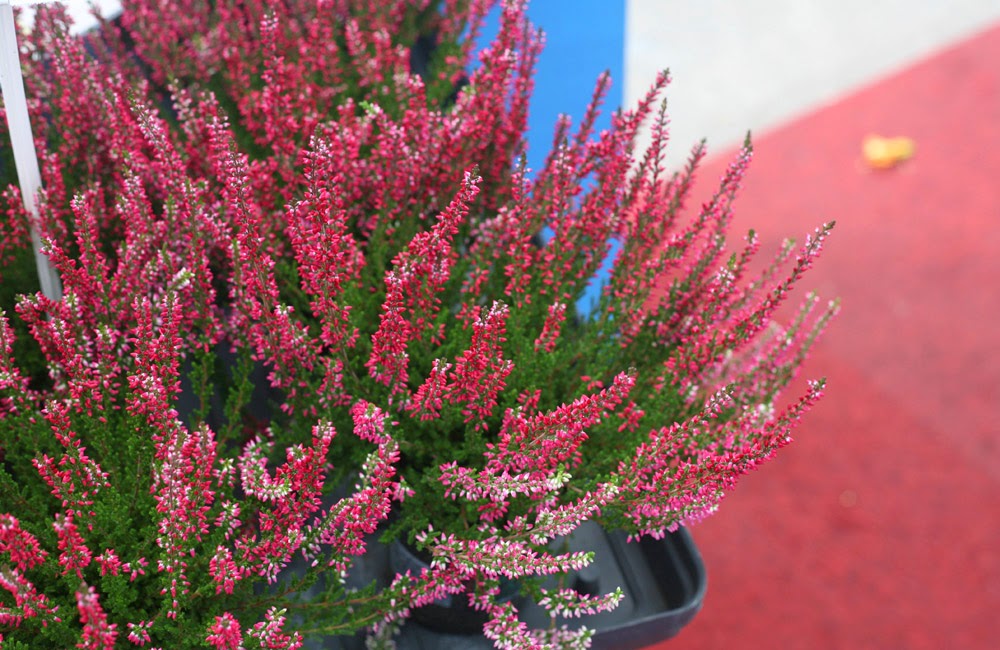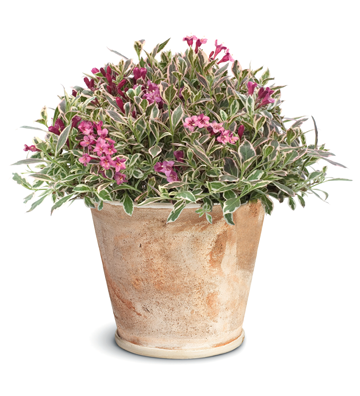 |
| Lo & Behold Dwarf Butterfly Bush |
In my last post I wrote about new breakthrough plants that have changed the evolution of flowering shrubs. This post continues the discussion, and I've listed the shrubs that I think have changed the way we think about, and use them in our gardens and landscapes.
Have I left anything off the list? Send me your thoughts and comments.
Plant Name - Significance to the Industry
Abelia mosenensis
A Zone 4 Abelia with better fragrance than Viburnum carlesii
Berberis thun. ‘Concorde’
Dwarf, grape purple foliage, that’s nearly sterile
Buddleia davidii
English Butterfly Series™
A new series with dwarf growth. They actually look good in a one gallon.
Caryopteris incana Sunshine Blue®
A hardy, strong growing Caryopteris with bright yellow foliage and rich blue flowers. Move over Worchester Gold. Move over Gold Mound Spiraea?
Caryopteris Petit Bleu™
A dwarf Caryopteris with dark glossy leaves
Clethra ‘Hummingbird’
Sixteen Candles may be the best, but it was Hummingbird that started it all.
Clethra ‘Ruby Spice’
Andy Brand discovers the first pink Clethra that actually stays pink.
Corylus a. ‘Red Majestic’ pp#16,048
The first contorted filbert with red foliage. Year round excitement.
Deutzia gracilis Chardonnay Pearls®
The first Deutzia with season long color. Bright lemon yellow foliage rivals Spiraea
Diervilla ‘Butterfly’
Landscaper know the Diervilla is as tough as nails but Butterfly is attractive enough for retail
Euonymus alatus ‘Rudy Haag’
Grow this dwarf selection to be environmentally proactive in the fight against invasives.
Forsythia ‘Golden Peep’
Who has room for a 12 foot Forsythia? Not me, nor do many people. This is a great plant for around the deck
Fothergilla major ‘Blue Shadows’
A blue leafed Fothergilla that actually lives. Yes it’s true. Gary Handy discovers a Blue Mount Airy.
Hibiscus syriacus Chiffon™ Series
A vigorous rose of Sharon that will make money for nurseries and flowers like crazy. Unique Lacy flowers
 |
| Pink Chiffon |
Hydrangea arborescens ‘Hayes Starburst’
A first! Hayes Jackson discovers a double flowered form of arborescens.
Hydrangea Endless Summer™
Great news for us in the Midwest with Hydrangea envy. Blooms on new wood. More to come.
Hydrangea paniculata ‘Limelight’
A Pee Gee with bright green flowers, strong stems. Does not flop like Pee Gee and finishes fast.
Hydrangea paniculata Little Lime
The best. A dwarf with strong stems and full flower heads
 |
| Little Lime |
Hydrangea paniculata Quick Fire™
Why wait until August for Blooms. Quick Fire flowers in June and turns pink before Pink Diamond even flowers.
Hydrangea ‘Snowflake’
The best oakleaf with it doubled, hose in hose blooms that turn pink as they age. Very healthy and great fall color.
Hypericum ‘Blue Velvet’
Blue Leaves on a Hypericum, yes. Paul Cappiello delivers a hit.
Indigofera ‘Rose Carpet’
Rich pink blooms from Late June until frost. Hugs the ground like a rug. I mean carpet.
Itea Little Henry®
The first dwarf Sweetspire.
Kerria ‘Honshu’
A hard to find Kerria with big flowers and superior stem hardiness. The only selection with fragrant flowers.
Leptodermis oblonga
A neat little known treasure with vivid pink flowers that keep on coming all season long.
Physocarpus Diabolo®
The first ninebark with purple foliage.
Physocarpus Summer Wine®
The first compact ninebark with purple foliage. Who has room for a 15 foot ninebark? Not me. A cross between Diabolo® and ‘Nana’.
Physocarpus Coppertina™
The first ninebark with orange red foliage.
Potentilla Pink Beauty
A pink Potentilla that actually comes out pink and lives more than a year.
Rhamnus Fine Line®
An environmentally friendly Rhamnus with cut leaves and narrow columnar growth. Remember how many Tall Hedge you used to sell.
Rosa Knock Out®
It proved that a rose can be grown without having to spray
Rosa Home Run®
The most disease resistant, most attractive rose on the market. Comes in Red and Pink.
Rosa Morden Sunrise
Yes, a strong growing, healthy yellow rose.
Sambucus Black Beauty™
The first black leaf elder with pink flowers.
Sambucus Black Lace™
The first cut leaf black elder with pink flowers. Incredible texture. As elegant as a Japanese Maple.
Sambucus ‘Sutherland Gold’
The best yellow leafed elder.
Spiraea ‘Gold Mound’ / 'Goldflame'
The plant that started it all. Lime Mound was first but never caught on.
Spiraea Pink Parasols®
The first pink flowered Spiraea fritscheriana. Ground covering habit. Landscapers forget about Rhus ‘Gro-low’ this plant is great for mass planting and it has large pink flowers.
Thuja Spring Grove®
A hardy northern selection that is deer resistant.
Viburnum ‘Cayuga’
An improved fragrant Viburnum with disease resistance.
Viburnum Cardinal Candy™
The best plant in the garden in late summer. Loads of tightly packed cardinal red fruit. No pollinator necessary.
Viburnum nudum BRANDYWINE™
A new variety that does not need a pollinator to enhance fruit set.
Viburnum plicatum ‘Popcorn’
A hardy, heat tolerant snowball Viburnum.
Viburnum p. tomentosum ‘Summer Snowflake’
What’s better than a Viburnum? A continuous blooming Viburnum
Viburnum ‘Mary Milton’
A Snowball Viburnum with pink flowers.
Weigela Midnight Wine®
The first dwarf purple leafed Weigela.
Weigela My Monet™
The first dwarf variegated Weigela. Very hardy, bright pink
Weigela 'White Knight’
The best reblooming Weigela. White flowers with a touch of pink.
Weigela Wine & Roses®
Dark burgundy foliage and vivid pink flowers.


















































